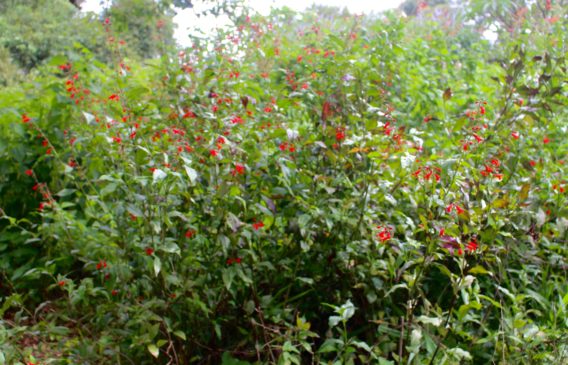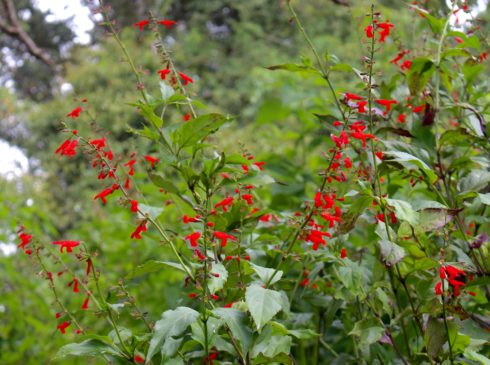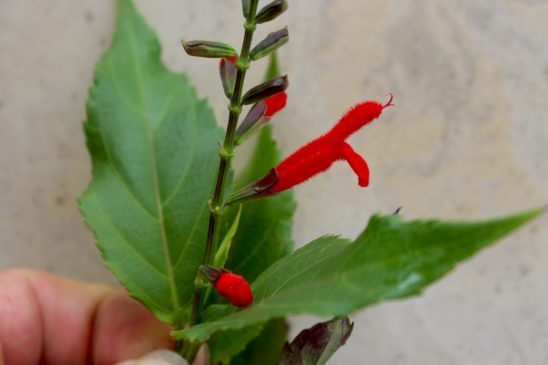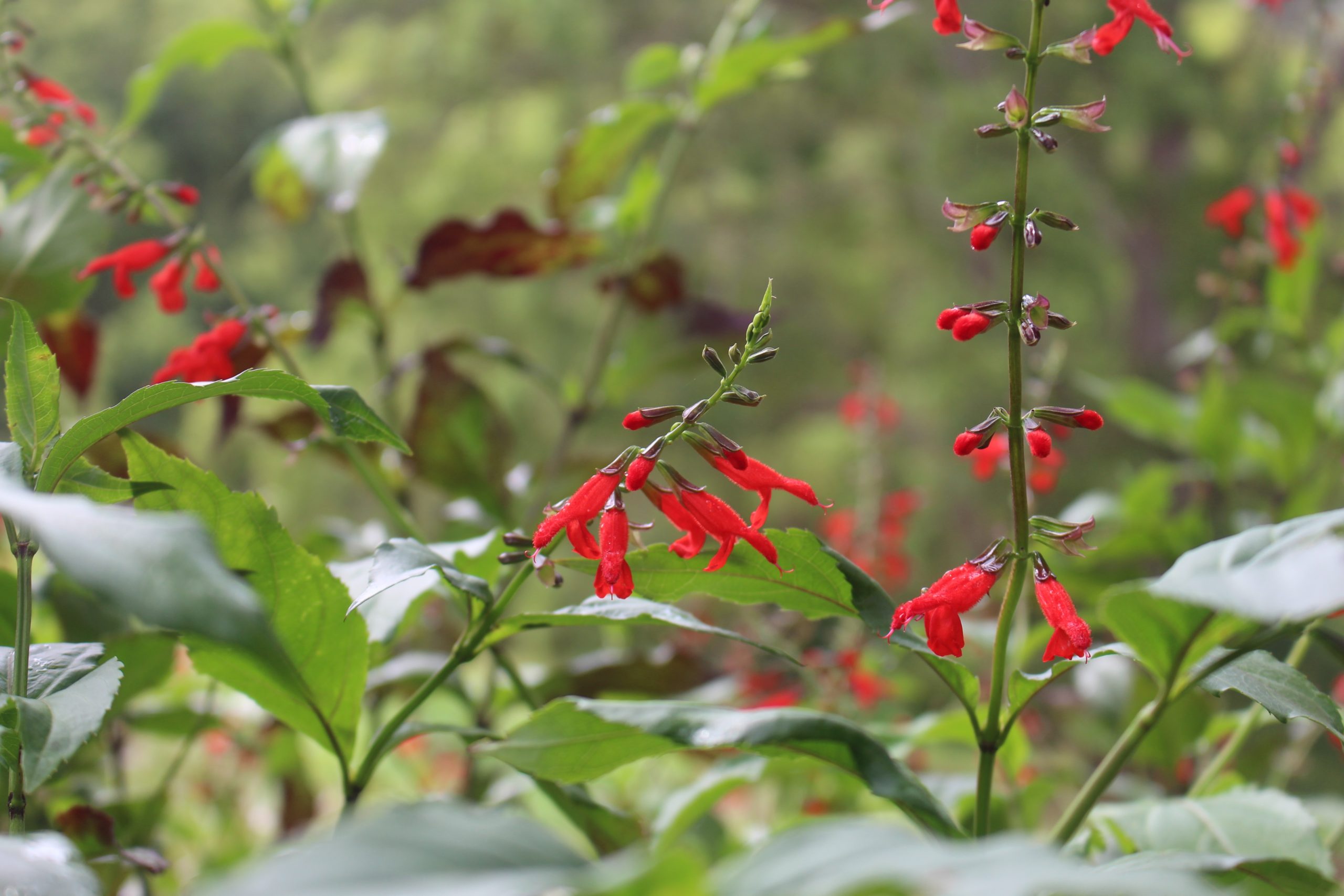Clear red Salvia miniata flowers shine brightly from a shady spot in the garden. They contrast beautifully with the dark green, shiny leaves.

According to BC, Salvia miniata comes from shaded mountain hillsides at around 600 m height, in warm and moist parts of Belize, and Chiapas in Mexico. Consequently it needs a frost-free climate to survive outdoors. Although BC describes it as a herbaceous perennial, it grows and flowers year-round here.
The thin glossy leaves give it a lush look for a salvia, but it is surprisingly drought tolerant; I kept mine through the big drought by watering when they wilted. However it is apparently a difficult species to grow in an arid climate or in a windy position.
The plant has a well-behaved form, growing from many thin vertical stems and spreading slowly to a small colony from underground stems. It grows to around 2 m high, with a dense and dark look. Leaves are around 80 mm long, with serrate edges, dark green and shiny on the top, and paler below with prominent veins. Stressed leaves pick up a red or purple tint. The leaves have no scent.
Flowers are around 35 mm long, borne on terminal spikes, in well spaced pairs. The red corolla is velvety and sits above a calyx that shades from green to purple.

Salvia miniata flowers continuously although sparsely here, which makes it difficult to prune, but a late winter pruning (about 1/3 off) helps to make a show in late Spring on the new growth. It grows readily from cuttings, necessary for over-wintering in cooler climates. It also produces viable seed, although this is a bit tricky to collect, as the seeds ripen within the green calyces, which readily drop.

